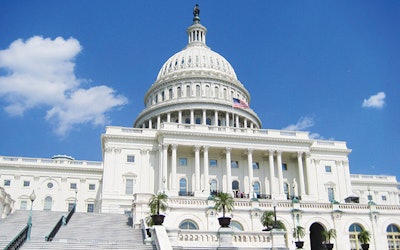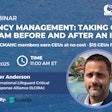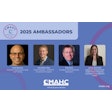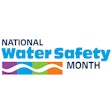
Editor’s note: This article went to press coincident with the merger of APSP and NSPF into the Pool and Hot Tub Alliance. As such, it retains references to APSP, true to source quotes used in the story and the original text as written by Dan Seeger. Future articles about the merged organization will refer only to the Pool and Hot Tub Alliance.
Plenty of people have reported high levels of exhaustion from the simple act of trying to keep up with the news in recent years. That challenge is only compounded when there’s an added need to cut through the constant din of agitated conflict in search of industry information — the type that doesn’t often lead nightly news broadcasts.
As an organization, the Association of Pool and Spa Professionals is aware of the industry-wide need to stay current on developments that could impact day-to-day work, but can easily be missed in the constant hustle required to keep a business afloat. It’s for that reason that APSP has a robust government relations office.
WHERE THE LAWS ARE WRITTEN
“Everything from building codes to safety codes to any type of regulation for permitting processes, things of that nature — that’s all government relations,” says Lawrence Caniglia, president and CEO of APSP. “If an organization like ours doesn’t have a good, solid government relations program, it will negatively impact everyone counting on us, from the multibillion-dollar manufacturers down to the mom-and-pop shop. Everybody is impacted by government relations.”
Part of the challenge of tracking the many permutations of governmental tinkering as it relates to the pool and spa industry is the sheer scope of topics that can find their way into the operations of aquatics professionals. Pool safety issues, code adoption, energy efficiency legislation and countless other concerns fall under the auspices of APSP’s government relations office. They are charged with reacting to the unexpected turn in written rules and being vigilantly proactive in addressing legislation that could be detrimental to the industry.
And there’s often a need to acquaint elected officials and other governmental leaders with the fundamental facts about the operation of pools and spas and how the industry around them operates, according to Carl Chidlow, principal with Winning Strategies Washington, a federal lobbying firm that’s been on retainer with APSP for the last five years.
“Many offices understood that there might be a lot of pools in their state, but they had no idea of the overall number or the per capita market presence,” Chidlow says. “We wind up explaining to them that it’s not just the construction of the pool, but that there’s a whole industry involved in maintenance and repair. And then in the commercial market, there are people that service the pools and provide lifeguarding services.”
Chidlow finds that most legislators and government staffers he talks with are receptive about the needs and the concerns of the pool and spa industry.
“It’s about just helping the people in government understand, at a very basic level that develops over time, that this is an industry they need to look out for,” notes Chidlow. “These are jobs held by their constituents.”
RELATED: Promoting business-friendly regulation
Since the education piece is so vital, APSP can’t afford to leave those in government to do their own research about the industry. The basics need to be laid out, as do the hidden repercussions of rashly written legislation. The simplest tweak to a rule set can create an unworkable model for the installation or maintenance of pools and spas.
“It’s extremely important that the trade association have a successful, properly funded government relations program that communicates effectively with the membership,” adds Caniglia.
“I get alerts about 30 times a day on all different kinds of issues,” she says. “I go through each one of them to see how they’re specific to our members and to determine how or why members might be interested in them.”
Once Ratliff has assembled and condensed the pertinent information, she develops the communications that will keep the APSP membership properly apprised of shifts in the field.
Although APSP regularly pushes for national standards that can make it easier to navigate the regulatory landscape for pool and spa professionals, that uniformity simply doesn’t happen very often in practice. More commonly, the most dynamic shifts are happening at the state and local levels, so communications to APSP membership need to be targeted accordingly. The first email alerts go out only to subscribers in relevant states.
Following the more direct outreach, APSP also makes sure regulatory updates are collected in a manner that allows for broader dispersal and easy reference.
“When we create the weekly newsletter, all of the bills from the last couple of weeks go in there as well,” Ratliff says. “And then we put everything on the website. In the government relations section of the website, we have a map, and anyone who accesses it can see every bill or regulation that’s recently taken place.”
AHEAD OF THE CURVE
Even as the APSP government relations office devotes a great deal of time and resources to reacting to the latest regulatory turns, they’re also putting in the effort to make sure the industry has proper input to the shaping of any new rules.
According to Hatfield, the early portion of any new calendar year is especially busy on that front. At one point, she notes, 42 of the 50 state legislatures were in session, essentially simultaneously. And the government relations office needed to stay on top of what was happening with all of them.
“We dig in and ensure that we’re not being blindsided by a piece of legislation,” says Hatfield. “It’s a very time-consuming task, especially if we determine a proposal is something we should be involved in shaping. As our efforts get underway, we report to the members, we call legislative offices, and so on.”
In plainly reciting the contents of his calendar, Chidlow demonstrates precisely how daunting it is to maneuver through the legislative process. In the course of a few days, he pinballed around offices held by both major political parties, covering several states. The docket included elected representatives with key appointments — such as the head of the House Energy and Water Appropriations Subcommittee — and agency officials, as well as fleets of lower level staff members compiling massive dossiers for their bosses.
“You want to keep having those conversations, keep staying engaged with the staff, and build a collaborative strategy with Congress and with the agencies to move the best legislation forward,” says Chidlow.” “The end goal is always to the benefit of the consumer, whether it’s reduced energy load or water conservation or safety. You know all of these things benefit people who use pools, so that’s really been the focus of APSP government relations writ large.”
RELATED: Models of Consistency
Especially on the federal level, the same dysfunction routinely cited by critics of the government has gummed up the works for APSP’s priorities. The government shutdown during the winter complicated the ongoing campaign to synchronize energy efficiency standards for pool pump motors with the new regulations for pool pumps that were approved last year. Even with the setbacks, confidence remains high that the discrepancy will be ironed out.
“We want to make sure there’s no sort of loopholes in the rules that could create bad market effects with folks retrofitting their equipment or repairing their equipment and not still maintaining that improved efficiency,” notes Chidlow. “That I would say is probably priority number one. We’re working daily to finalize this fix.”
The alignment of pool pump and pool pump motor rules is a good example of the overall goals of the APSP government relations office. Like most industries, there’s an aversion to onerous regulations that can make the cost of doing business too high, but there’s also a keen awareness that solid rules protect U.S. manufacturers from low-cost and shoddy knock-offs from overseas markets. Safe, energy efficient and high-quality equipment lead to happy consumers, which in turn keeps the industry growing.
When it comes to those regulations, though, consistency is key.
“‘Harmonization’ is the term we like to use,” Chidlow says. “It’s where the industry knows they have market certainty of what product performance they need to engineer towards. They want to have some certainty that once they get the product up to a particular efficiency standard or in compliance with a particular set of regulations that those regulations don’t all of a sudden flip on them or become too aspirational and therefore not realistic to comply with. We want the industry to have one set of rules that they know they have to play with.”
TWO-WAY STREET
As the APSP government relations offices sifts through this towering pile of regulatory concerns, they are aware they can’t be mere conduits of information to the membership. To best serve pool and spa professionals, the organization must provide some clear-eyed analysis.
“When I put together the summaries that go out to members, I often add in there whether or not APSP is in support of measure,” Ratliff explains.
There’s ample expertise within APSP leadership on the legislative topics at hand, but serving as the voice of the industry mandates an attentiveness to the collective views of the membership. For ideal functioning, the communication needs to be two-way.
“Sometimes, with certain bills coming out, we’re looking for member comments on them,” adds Ratliff.
RELATED: The IHTA of APSP: Fighting Legislation, Seeking Participation
The membership can provide insights on the ways new laws and other legal shifts might impact them, and they’re especially well-attuned to identifying how a new national standard might run afoul of regulatory peculiarities on the local, state and regional levels. This feedback strengthens the organization’s ability to speak with a strong, singular voice.
Of course, those aspirations toward collective agreement will always fall at least a little short. Decisions about which elements of legislation are pushed and which are opposed invariably aren’t going to please each member.
“There are some hard-political realities of why certain things can’t be done or why certain regulations have to go in,” concedes Caniglia. "When we communicate with the stakeholders, it’s our responsibility to explain what’s happening and why.”
BIGGER AND BETTER
Unity has also been a major driver behind other major changes coming out of APSP this year. First, the government relations office announced a historic partnership with the Aquatic Professionals Education Council and the Independent Pool & Spa Service Association to create the Texas Pool & Spa Coalition. The stated mission of the group is to advocate for the industry in the state ranked third in the nation in total number of pools and spas.
That was only a precursor to an even more monumental news that APSP and the National Swimming Pool Foundation are merging, forming a new organization dubbed the Pool & Hot Tub Alliance.
According to Caniglia, government relations efforts will be one of the areas where the results of the expanded organization will be most clear.
“APSP was always the national trade group, and the National Swimming Pool Foundation is known internationally for what they do with commercial pools, research, and things of that nature,” Caniglia says. “Now we’re one big organization that’s working for the entire recreational water world. And I truly believe that in the realm of government relations, it will make us an even more important and more powerful voice, ensuring that the industry and stakeholders in it are well protected.”











































